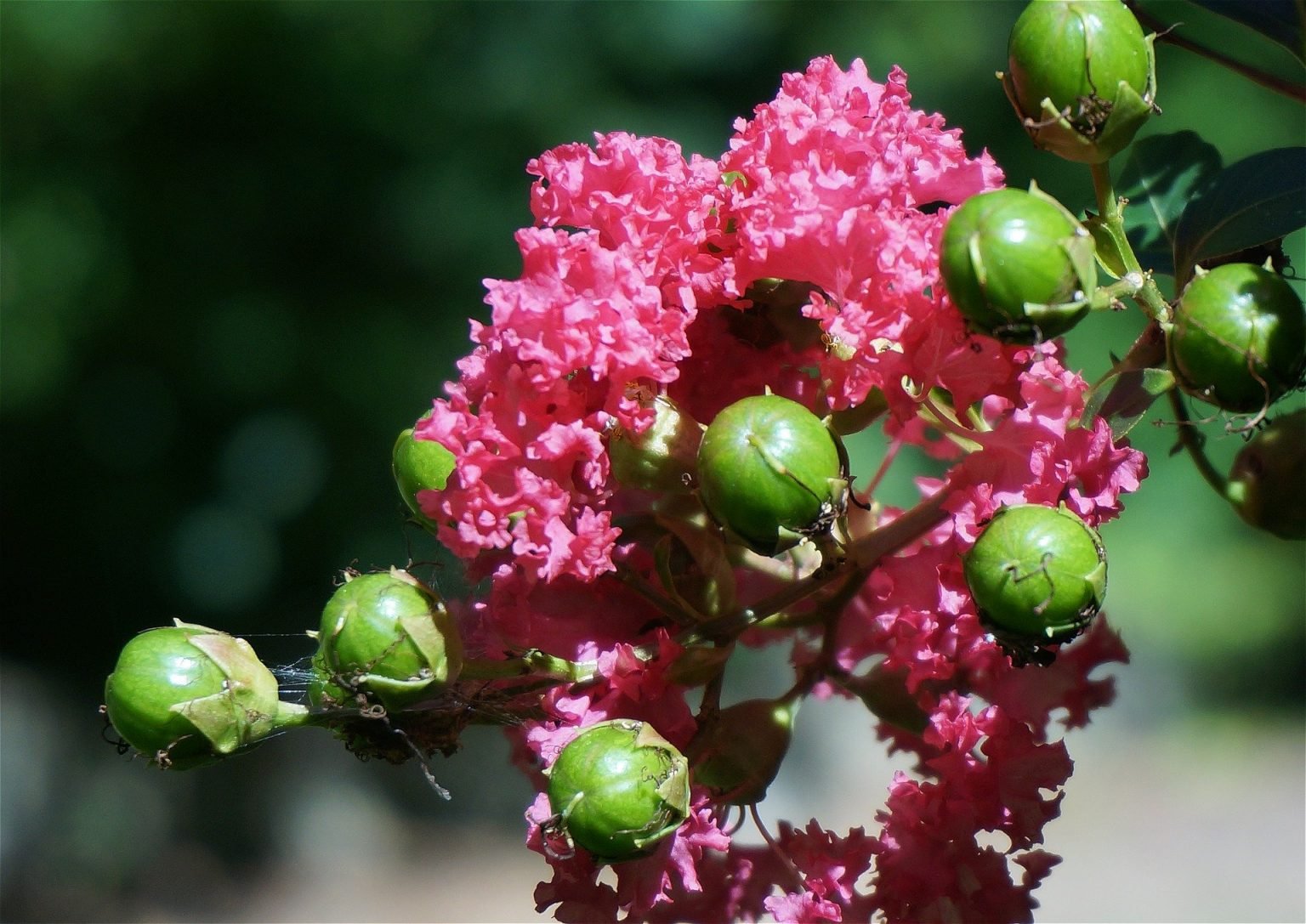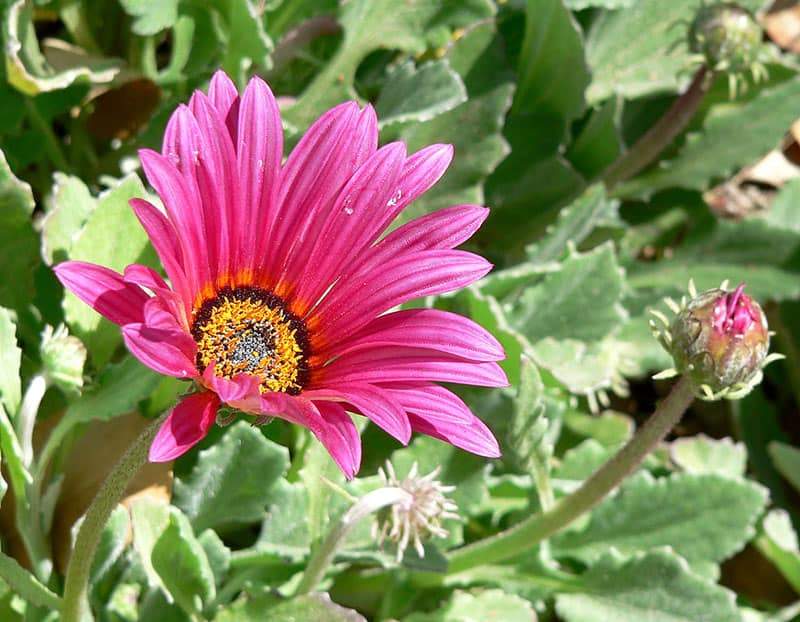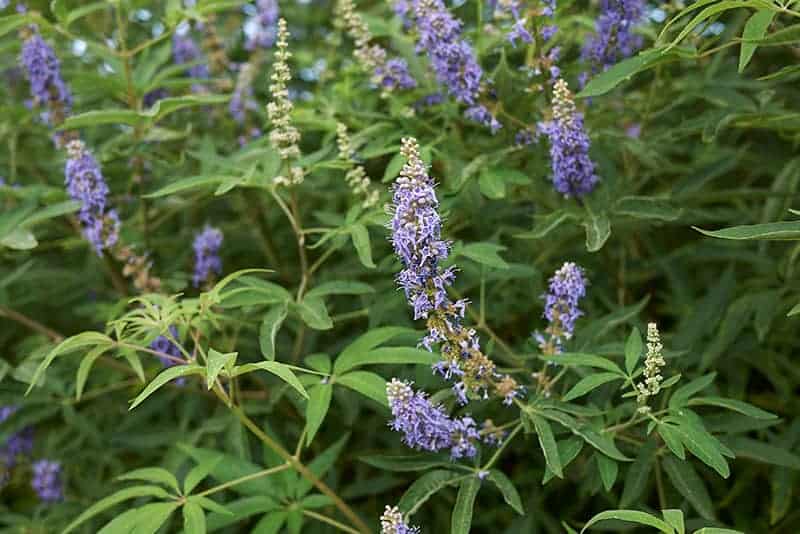"Flowers are the music of the ground. From earth's lips spoken without sou... Read More
- Home >
- Crepe Myrtle Pruning – Why, When, and How to do It
Crepe Myrtle Pruning – Why, When, and How to do It

The crepe myrtle tree is also commonly known as ‘crape myrtle,’ ‘crepe flower,’ and ‘Indian crape myrtle.’ Botanically speaking, its scientific name is Lagerstroemia indica. This is a deciduous plant that can be either a tree or a large shrub. It thrives in warm temperatures, being hardy through USDA Hardiness Zones 7–9, and so is popularly cultivated in these types of climates around the world. It is especially popular in the Southern United States, where it is a common sight in backyards and lining residential streets. The tree is actually native to parts of Australia and Asia.
It produces long, attractive leaves, which are bronze when they first emerge in spring but develop to a deep shade of green by summer. The bark of the tree has a mottled effect, and it sheds itself throughout the year to reveal fresh bark beneath. The flowers of crepe myrtle are the reason why it is so popular. It blooms in abundance in summer and fall, with huge panicles of densely packed, crinkled flowers. Crepe myrtle flowers come in various colors, from white to red and every shade of pink in between.
Is Pruning Crepe Myrtle Necessary?
The answer to this entirely depends on that cultivar of crepe myrtle you have, and where you have planted it. Research by the University of Florida indicates that if a suitable cultivar is selected and planted in an appropriate position, then you should never have to prune a crepe myrtle.
They take a naturally attractive shape with a rounded canopy, which will often reach as low as the ground. Unfortunately, many crepe myrtle plants are not properly labeled at garden nurseries, and adequate planting advice is not given, so commonly, people will end up planting crepe myrtle in the wrong place, and when it outgrows this spot, it will have to be severely pruned to prevent it from impeding other plants or blocking out light in the home.
There are many cultivars of crepe myrtle available, with dwarf varieties that do not exceed three feet in height, through to large trees that can range in height from 30 feet to 100 feet. Dwarf cultivars that work well as low hedging or in borders include ‘Hopi,’ ‘Zuni,’ ‘Prairie Lace,’ ‘Centennial,’ ‘Victor,’ and ‘Acoma.’ Larger varieties, like ‘Sioux,’ ‘Natchez,’ ‘Muskogee,’ ‘Miami,’ ‘Watermelon Red,’ and ‘Dynamite’ will typically reach a minimum of 25 feet tall, so they should be planted in a wide open space, away from the house and in a spot where they can grow unrestricted.
If you follow these guidelines, then your crape myrtle will be a very low maintenance plant that does not need regular pruning. However, if you have already got a crepe myrtle taking up too much space in your yard, then pruning might be necessary for your situation. The trend to drastically cut back a crepe myrtle by entirely lopping off the upper section led to the coining of the term ‘crepe murder,’ which refers to the way many people find the winter stumps of crepe myrtle to be unattractive. ‘
Crepe murder’ also compromises the structural integrity of the tree and results in stunted growth and greatly reduced flowering. The shoots that a crepe myrtle stump sends out will be thin and spindly, and unable to hold the weight of the flowers, giving it a sad, drooping appearance. This practice should be avoided for a whole host of reasons, but if you do find yourself in a position where you need to prune back your crepe myrtle, there are several options you can choose that will not harm your plant or leave you with an ugly winter stump on your lawn.
When to Prune Crepe Myrtle
The best time to prune your crepe myrtle depends on your reasons for pruning it. If you are removing dead, damaged, or diseased branches, then this can be done at any time of year and should ideally be done as soon as you notice an issue. To encourage blooming, prune immediately after flowers are spent. To prune for shape or size maintenance, always prune in late winter when the plant is in the final part of its dormant phase, as new growth will soon arrive. Avoid heavy pruning during fall because this will make the tree more vulnerable to winter damage, and it also means the tree will look unattractive through winter.
Pruning to Encourage Blooming
Some gardeners suggest that a crepe myrtle should be pruned after flowering to encourage the plant to flower again. This is because dormant buds become stimulated when the ends of the stems are cut, and new flowers will develop at the tips of these cut stems. There are arguments for and against pruning to encourage flower blooming, and a lot of this depends on the cultivar you have. Many modern cultivars of crepe myrtle have been selected for their ability to bloom for a long period of time, and therefore getting the plant to rebloom isn’t really an issue.
If you have a crepe myrtle that produces long seasons of blooms, then you may wish to refrain from pruning it. Most crepe myrtles that have not been pruned tend to flower more heavily, which is another reason you may wish to avoid pruning it. However, pruned crepe myrtles do typically produce larger flower panicles, so if this is something you want to achieve, then pruning after flowering could be a good move.
If you have a more traditional cultivar or crepe myrtle, which does not stay in flower for long, then pruning away spent flowers will encourage it to bloom again. By doing this, you can sometimes get three or even four blooming periods from your plant each year. To prune for improved flower production, simple cut away spent blooms when they fade to fruits or seed pods. This will also tidy up your tree if you don’t like the look of spent flowers or seed pods. The seed pods can also be quite heavy and might drag down your tree branches under their weight, and this is another reason that is in favor of pruning the crepe myrtle.
Pruning to Promote Health
Crepe myrtle can become densely branched if allowed to grow as it pleases, and some people may be concerned that this isn’t good for the health of the tree. Certainly, in older varieties of crepe myrtle, the tree should have its branches thinned out to ensure good airflow to prevent disease.
However, most modern cultivars of crepe myrtle are disease resistant, and so this is not an issue, and the thinning out of twigs is no longer recommended as essential. If your crepe myrtle does seem to be getting too densely branched, you can prune away some of the branches to allow more light in. This should be done during the winter when the tree is dormant so that its growth is not affected.
Use some sharp shears or a pruning saw to remove occasional branches; these should be younger branches that do not have a very thick diameter. This practice can be repeated every year if needed, but it isn’t essential if you are happy with how your tree is performing.
Pruning to Maintain Size
If you have a large crepe myrtle tree growing in a position that doesn’t accommodate its size, then you’ll need to undertake annual pruning to keep it at a manageable size. The best practice to ensure good shape and health is to remove all of the tips of the tree. This is known as ‘tipping’ and will reduce the size of the tree while retaining an attractive look. This is a time-consuming process that might be difficult if the tree is very large, and you cannot reach all areas of it.
However, if possible, this is the best option for reducing the size of the tree. If this option is not suitable, you can use ‘pollarding.’ This involves cutting the tree back quite dramatically to branches that are around three years old and several inches thick. These stumped branches will produce new twigs, and each year you should remove the twigs and cut back to the same place you previously cut. This will allow you to maintain the tree at a certain size quite easily, but it will not look as attractive as before.
When pruning a crepe myrtle, remember that these trees have vigorous growth habits, so pruning needs to be carried out annually because the tree will quickly regrow to its former size if it isn’t kept in check. When choosing that method of pruning to choose, you may want to consider the effects they have on blooming. A tree that is just pruned at the tips will not have its flowering ability negatively affected. If you choose to use pollarding, then you can expect blooming to be delayed by around a month while the tree takes extra time to recover. The more severely you prune the tree, the more blooming will be affected.

Related Content
-
Top 15 Most Beautiful Flowers You Can Grow In Your Garden Immediately
-
Different Types of Earthworms with Pictures & Facts
There are many types of worms, but those that we commonly encounter in our... Read More
-
All about Spider Mites and How to Get Rid of Them
Home growers and gardeners tend to be quick to learn one of the most uncom... Read More
-
Top 8 Most Reliable & Best Dandelion Killers – Get These Weeds Off Your Garden & Lawn
Removing dandelions can be a difficult process. They are known to grown lo... Read More



